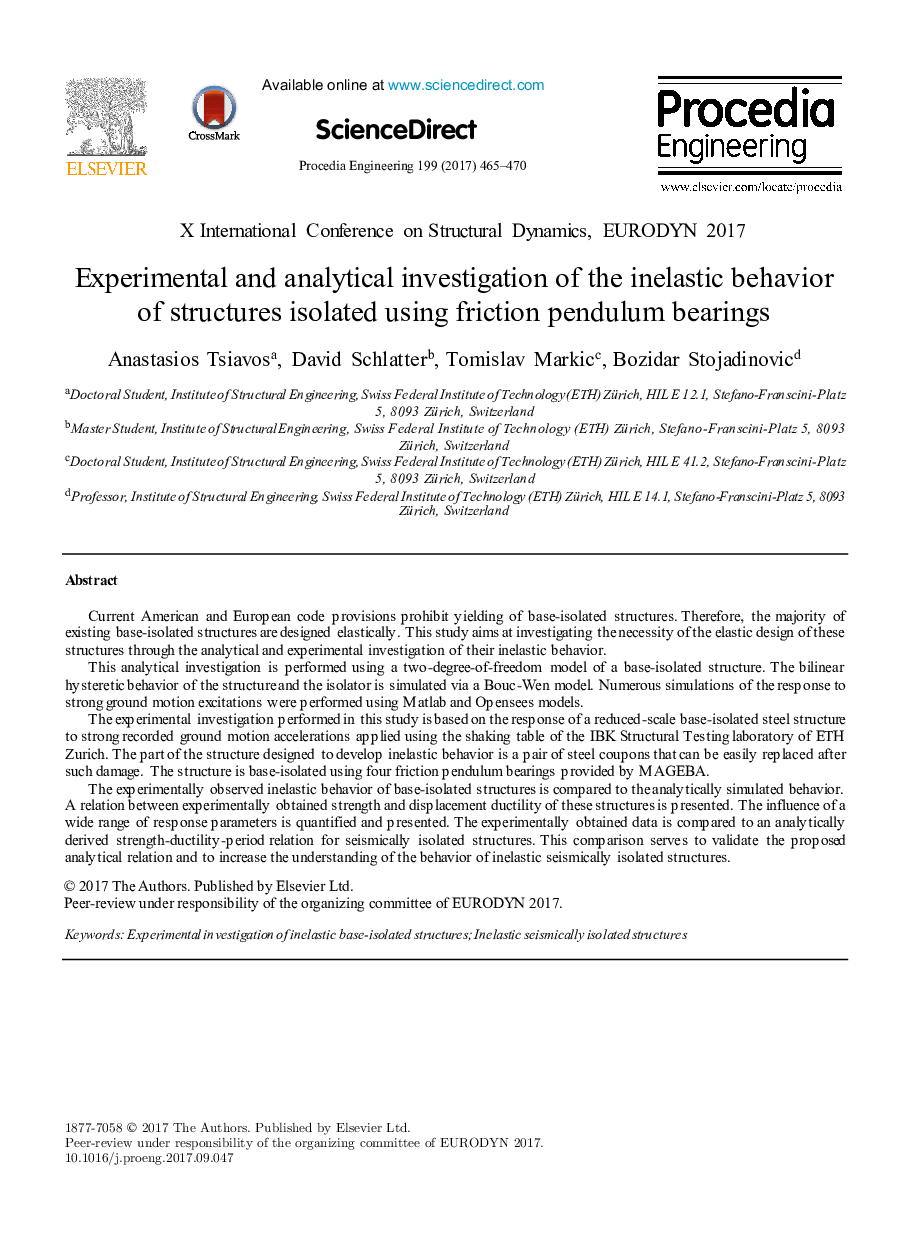| Article ID | Journal | Published Year | Pages | File Type |
|---|---|---|---|---|
| 5026805 | Procedia Engineering | 2017 | 6 Pages |
Current American and European code provisions prohibit yielding of base-isolated structures. Therefore, the majority of existing base-isolated structures are designed elastically. This study aims at investigating the necessity of the elastic design of these structures through the analytical and experimental investigation of their inelastic behavior.This analytical investigation is performed using a two-degree-of-freedom model of a base-isolated structure. The bilinear hysteretic behavior of the structure and the isolator is simulated via a Bouc-Wen model. Numerous simulations of the response to strong ground motion excitations were performed using Matlab and Opensees models.The experimental investigation performed in this study is based on the response of a reduced-scale base-isolated steel structure to strong recorded ground motion accelerations applied using the shaking table of the IBK Structural Testing laboratory of ETH Zurich. The part of the structure designed to develop inelastic behavior is a pair of steel coupons that can be easily replaced after such damage. The structure is base-isolated using four friction pendulum bearings provided by MAGEBA.The experimentally observed inelastic behavior of base-isolated structures is compared to the analytically simulated behavior. A relation between experimentally obtained strength and displacement ductility of these structures is presented. The influence of a wide range of response parameters is quantified and presented. The experimentally obtained data is compared to an analytically derived strength-ductility-period relation for seismically isolated structures. This comparison serves to validate the proposed analytical relation and to increase the understanding of the behavior of inelastic seismically isolated structures.
